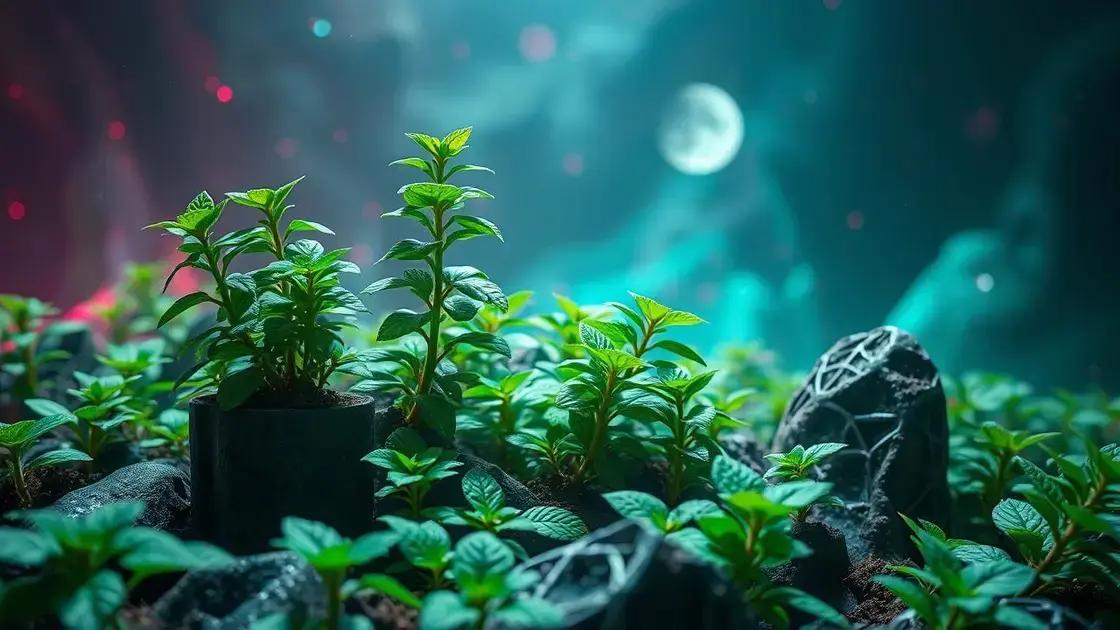How to Care for Peppermint Plant: 5 Essential Tips for Thriving Growth
How to care for peppermint plant enthusiasts often wonder what makes this herb thrive. Is it the soil type, water, or something else? Discover valuable insights into nurturing your peppermint plants to flourish.
Table of Contents
ToggleUnderstanding the unique needs of peppermint plants
How to care for peppermint plants requires understanding their specific needs. These aromatic herbs thrive in the right conditions, making proper care essential for their growth. Here, we’ll share insights into the unique needs of peppermint plants to help you cultivate a healthy garden.
Soil quality and pH
Peppermint plants prefer moist, well-drained soil rich in organic matter. The ideal pH range for peppermint cultivation is between 6.0 and 7.0. Consider using:
- Moisture-retaining soil mixes
- Compost to enhance nutrient levels
- A soil pH test kit to monitor acidity
Light requirements for growth
How much sunlight do peppermint plants need? These herbs thrive in partial to full sunlight, making it crucial to provide the right amount of light:
- 6-8 hours of indirect sunlight daily
- Some shade during the hottest parts of the day
- Indoors? Consider using grow lights if natural light is insufficient
Watering and humidity considerations
Maintaining proper moisture levels is vital for peppermint plants. The following practices can help:
- Water when the top inch of soil feels dry
- Avoid letting plants sit in water to prevent root rot
- Increase humidity levels, especially indoors, by misting plants or placing a tray of water nearby
For those interested in exploring indoor gardening techniques, understanding the needs of your peppermint will set you on the right path.
Essential nutrients for peppermint health
Peppermint plants benefit from regular feeding to enhance growth. Fertilizers specifically formulated for herbs can provide the necessary nutrients:
- Balanced organic fertilizers
- Liquid plant food during the growing season
- Make sure not to over-fertilize, as it can lead to excessive leaf growth and reduced flavor
In summary, understanding the unique needs of peppermint plants, from soil to light and water requirements, is crucial for their thriving condition. Providing optimal care ensures a bountiful harvest of aromatic leaves.
Essential watering and soil requirements for peppermint

Essential watering and soil requirements for peppermint are critical for its growth and overall health. Understanding how to provide the right amount of moisture and the ideal soil conditions will ensure that your peppermint thrives and produces aromatic leaves.
Understanding soil types for peppermint
Peppermint plants flourish in well-draining soil that retains moisture without becoming waterlogged. Here are some soil mixtures that work well:
- Potting soil enriched with compost
- Loamy soil with good organic matter
- Mixing perlite to enhance drainage
It’s essential to check soil pH as well, aiming for a range between 6.0 and 7.0 to create a suitable environment for peppermint.
Watering practices to encourage growth
Watering peppermint plants effectively is just as important as the soil quality. Follow these guidelines to ensure your plants are well-hydrated:
- Water the plants when the top inch of soil is dry to the touch.
- Use lukewarm water to avoid shocking the roots.
- Ensure that excess water can drain away to prevent root rot.
Keep in mind that peppermint enjoys moisture, but it’s crucial to strike a balance.
Humidity levels and their impact
Peppermint plants thrive in environments with high humidity. Consider the following practices to maintain adequate moisture levels:
- Mist the leaves regularly to increase humidity.
- Place a small tray of water near your plants to provide moisture in the air.
- Avoid placing peppermint near heating vents or drafty windows.
For those seeking to enhance their gardening skills, exploring indoor gardening techniques can provide more insights into creating the perfect environment for herbs.
Common watering mistakes to avoid
Several common mistakes can hinder the growth of peppermint. Being aware of these pitfalls can help!
- Overwatering: This can lead to root rot and unhealthy plants.
- Underwatering: Dry soil can stress peppermint and stunt growth.
- Using hard water: This can introduce unwanted minerals affecting plant health.
By understanding the essential watering and soil requirements for peppermint, you can cultivate strong, vibrant plants that provide abundant harvests throughout the growing season.
Common pests and how to manage peppermint plant issues
Common pests and how to manage peppermint plant issues are vital topics for ensuring a healthy herb garden. Recognizing pests that may threaten your peppermint plants and learning effective management strategies can maximize your growth potential.
Identifying common pests on peppermint
Peppermint plants can be susceptible to various pests. Here are some of the most common offenders:
- Aphids: Tiny, soft-bodied insects that suck sap from leaves.
- Spider mites: Microscopic pests that cause mottling and discoloration.
- Whiteflies: Small, white insects that also feed on plant sap.
- Fungus gnats: Small flies whose larvae can damage root systems.
Signs of pest infestation
Detecting infestations early is crucial. Watch for these signs:
- Discoloration or yellowing of leaves
- Visible insects on stems or undersides of leaves
- Damage to leaf edges or tips
- Sticky residue on plants, known as honeydew
Regularly inspecting your peppermint plants can help catch these issues before they escalate.
Organic pest control methods
Managing pests on your peppermint plants can be achieved through several organic methods. Consider:
- Insecticidal soap: Effective against many soft-bodied insects.
- Neem oil: A natural fungicide and insect repellent.
- Garlic spray: A homemade solution that repels insects.
- Physical barriers: Using row covers to protect plants from pests.
By integrating these methods, you can effectively keep your peppermint plants healthy.
Preventative measures for healthy peppermint
Prevention is always better than cure. Here are some tips to prevent pest outbreaks:
- Maintain healthy soil and proper watering practices.
- Avoid overcrowding plants to ensure good air circulation.
- Regularly remove any dead or diseased leaves.
- Introduce beneficial insects, like ladybugs, to control pest populations naturally.
For additional gardening insights, consider exploring indoor gardening techniques that provide tips for managing pests.
By understanding common pests and learning how to manage peppermint plant issues effectively, you can enjoy a thriving herb garden full of delicious, aromatic leaves.
In conclusion
Caring for peppermint plants requires understanding their unique needs, including essential watering, soil requirements, and pest management. By providing the right conditions and maintaining vigilance against common pests, you can cultivate thriving peppermint plants that yield flavorful leaves for your culinary uses. For more insights and tips on enhancing your indoor garden, don’t hesitate to explore additional gardening resources!

